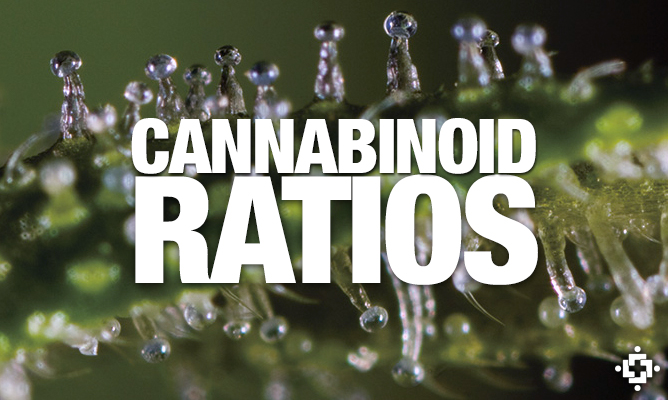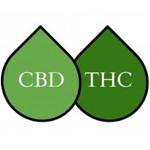
Finding The Optimal Therapeutic Ratio Of THC And CBD
In last week’s post we explored the entourage effect and how all the compounds within the cannabis plant work together to give the plant its therapeutic versatility. But one question remains in minds of many medical cannabis patients: “what is the optimal ratio of cannabinoids for my needs?” The answer, like many questions in the world of medicine, is still being researched.
Given the fact that tetrahydrocannabinol (THC) and cannabidiol (CBD) are the two most prominent chemical compounds in the cannabis plant, the vast majority of research to date has focused on the ratio of these two cannabinoids. While the ability to control cannabinoid ratios within your own medicine remains limited, the information provided here will hopefully give you some insight into the future of cannabis based therapy.
THC and CBD: The Beginning Of A Beautiful Friendship
Research on the benefits of tetrahydrocannabinol (THC) and cannabidiol (CBD) in isolation is well established. THC demonstrates analgesic, anti-emetic, and anti-inflammatory properties, whereas CBD possesses anti-psychotic, anti-seizure, and anti-anxiety properties.
“Subjects reported more pleasurable effects and less anxiety with the combination of CBD and THC than they felt with THC alone.”
However, research on the simultaneous use of THC:CBD is less robust – its origins can be traced to Brazil in the mid-1970s. In this study, patients were given between 15-60mg of CBD in conjunction with 30mg of THC, and the effects were measured. Subjects reported more pleasurable effects and less anxiety with the combination of CBD and THC than they felt with THC alone.
 Furthermore, a group of scientists examined the effects of administering CBD at a dose six times that of THC. They found that 73% of study participants reported a decreased feeling of being “high” when compared to THC alone.
Furthermore, a group of scientists examined the effects of administering CBD at a dose six times that of THC. They found that 73% of study participants reported a decreased feeling of being “high” when compared to THC alone.
Follow-up studies have demonstrated that the combination of the two cannabinoids reduced users’ experiences of tachycardia (increased heart rate), gait instability, and difficulty in eye tracking exercises. These results support the theory that CBD works to minimize some of the negative side effects of THC.
Modern Therapeutic Applications Of The Cannabinoid Ratio
The most recent research into THC:CBD ratios comes out of the pharmaceutical industry, specifically around the GW Pharmaceuticals‘ Sativex, which has a 1:1 ratio of THC and CBD. In the clinical trials phase of drug development, researchers examined the effects of THC, CBD, and combination extracts on sleep, pain control, and muscle spasms. They found that 1:1 THC-CBD extracts provided the most therapeutic relief across all categories.
THC and CBD combinations also show therapeutic promise across a number of disease states for which there has been limited therapeutic breakthrough to date.
In Amyotrophic Lateral Sclerosis (ALS), THC has been shown to delay motor deterioration and increase long term survival. Recent work has built on this study to show that the addition of CBD in conjunction with THC leads to a 14% increase in motor performance and an increase in survival beyond the survival rates with THC alone.
In cancer, cannabis has long been credited with helping people combat the nausea associated with chemotherapy. Furthermore, THC and CBD each possess cytotoxic (cell destroying) and anti-angiogenic (prevention of development of new blood vessels) properties. These two properties are critical to combating the spread of cancer within the body, making whole-plant cannabis extracts a viable medical option.
Practical Implications For Medical Marijuana Patients
As it stands, there is still an overwhelming trend towards favoring one cannabinoid over another. Due to federal prohibition in the US, the vast majority of cannabis is grown indoors. Additionally, historical patient demand has pushed cultivators to favor strains with higher THC.
Thus the typical products in your local dispensary will have THC:CBD ratios as high as 20:1 for flowers and 80:1 for concentrates. However, given the emergence of CBD into the public consciousness, more people are considering cannabinoid ratios.
“Standardized testing is essential to the advancement of our understanding of this issue.” – Dr. Jeffrey Hergenrather
Dr. Jeffery Hergenrather, President of the Society of Cannabis Clinicians, addressed the issue of cannabinoid ratios as follows:
“While cannabinoid ratios in most cannabis may be about the same, it is the terpene content which typically creates the different qualities that we have parsed as the difference between Indicas and Sativas for some time. It is highly likely that terpenes may very well alter the properties of the cannabinoids. Standardized testing is essential to the advancement of our understanding of this issue.”
Overall, we are still very much in the infancy of our understanding of the therapeutic potential of cannabis. But it is important as we move forward to be inclusive of whole-plant cannabis medicine in our policy making and not hold some cannabinoids in higher esteem than others. To do otherwise could leave a lot of sick people without viable medical solutions.
Photo Credit: Bubble Man
Dr. Malik Burnett is a physician advocate who completed his medical and business training at Duke University. He believes that a public which is better informed about the science behind cannabis will be able to …
